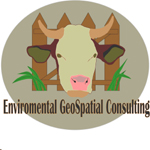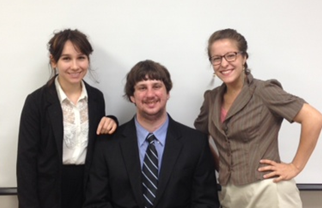

Summary
In this project Environmental Geospatial Consulting worked with Dr. Huebner to examine Freeman Center to determine suitable areas for cattle grazing. Furthermore we created an aspect map and a 3D model of Freeman Center for the purpose of having a truly visualized elevation map for the ranch.
Purpose
The objective of this study was to expand the geodatabase for Freeman Center with a focus on grazeable land acreage, with the secondary objectives of adding on missing data to the already existent geodatabase for Freeman Center, such as a 3D model and an Aspect map. E.G.S.C. identified areas of land that are not suitable for grazing as well as total grazeable acreage compared to accessible grazeable acreage. A pass/fail system was based off of factors that determine grazeablility. This study was accomplished through the use of spatial data analysis run on these areas. The study allowed us to produce maps of grazeable lands, as well a 3D elevation model and Aspect map, for the purpose of more sustainable planning in the raising and maintaining of cattle on Freeman Center.
Scope
The geographic extent of our study area is Freeman Center, San Marcos, Texas, which is approximately 4,200 acres. The study took approximately four months to complete.
Methodology
In order to determine grazeable acreage we utilized ArcMap and EDRAS Imagine to look at access to water, slope, vegetation, and accessibility. Cattle generally will not graze at a distance greater than one mile from a water access point on a flat path. Cattle often will avoid steep areas and prefer to graze on open land. Dense vegetation may make areas that would otherwise be grazeable inaccessible. Heavily forested areas are also often avoided because they do not tend to contain vegetation palatable to cattle. Considering these factors related to grazing, we were able to create a scoring system to determine which areas have the potential to be developed for grazing. Once we established values for the different variable we measured a path from the water access points to calculate the likelihood of cattle using a certain area for grazing. This information allowed us to evaluate every acre of Freeman Ranch and its potential for grazing.
To create the 3D model we obtained contour data from CAPCOG. We then imported the data into ArcScene and edited the data to get rid of lines that were inaccurate and skewing our data. We then proceeded to create a TIN from the contour lines elevation data. After this we added cultural features such as roads and fences, as well as physical features such as streams to the model. In addition to our 3D model we created a 2D Aspect map from our DEM in ArcMap. We then overlaid the Aspect map with a Hillshade data model in order to make in more readable.
Results
Our operations resulted in a determination of the percentage of total potential grazeable area, and the percentage of accessible grazing area. We were able to divide accessible grazeable land by pasture to allow Freeman Center to compare sections of their property.
We were also able to accomplish our goals of creating a 3D model as well as an Aspect map of the ranch. The 3D model should prove useful for future analysis and visualizing the change in elevation. The Aspect map will be useful for any future construction on the ranch as well as future analysis. All of these items will contribute to the planning and management of Freeman Center, and will serve as aids for future GIS analysis of the ranch.

Environmental GeoSpatial Consulting